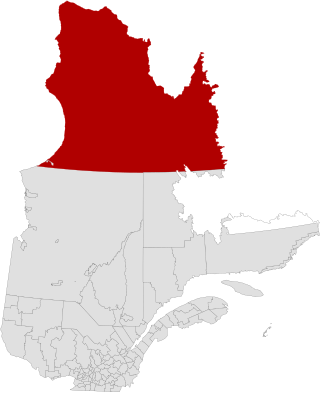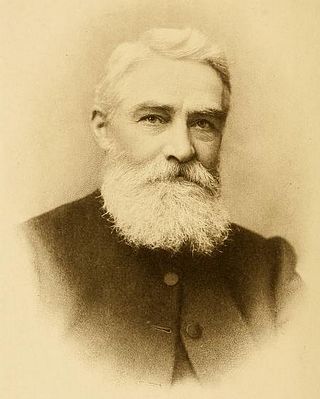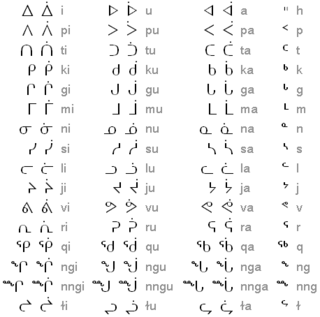Related Research Articles

The Inuit languages are a closely related group of indigenous American languages traditionally spoken across the North American Arctic and the adjacent subarctic regions as far south as Labrador. The Inuit languages are one of the two branches of the Eskimoan language family, the other being the Yupik languages, which are spoken in Alaska and the Russian Far East. Most Inuit people live in one of three countries: Greenland, a self-governing territory within the Kingdom of Denmark; Canada, specifically in Nunavut, the Inuvialuit Settlement Region of the Northwest Territories, the Nunavik region of Quebec, and the Nunatsiavut and NunatuKavut regions of Labrador; and the United States, specifically in northern and western Alaska.

Inuit throat singing, or katajjaq, is a distinct type of throat singing uniquely found among the Inuit. It is a form of musical performance, traditionally consisting of two women who sing duets in a close face-to-face formation with no instrumental accompaniment, in an entertaining contest to see who can outlast the other; however, one of the genre's most famous practitioners, Tanya Tagaq, performs as a solo artist. Several groups, including Tudjaat, The Jerry Cans, Quantum Tangle and Silla + Rise, also now blend traditional throat singing with mainstream musical genres such as pop, folk, rock and dance music.

Nunavik comprises the northern third of the province of Quebec, part of the Nord-du-Québec region and nearly coterminous with Kativik. Covering a land area of 443,684.71 km2 (171,307.62 sq mi) north of the 55th parallel, it is the homeland of the Inuit of Quebec and part of the wider Inuit Nunangat. Almost all of the 14,045 inhabitants of the region, of whom 90% are Inuit, live in fourteen northern villages on the coast of Nunavik and in the Cree reserved land (TC) of Whapmagoostui, near the northern village of Kuujjuarapik.

Edmund James Peck, known in Inuktitut as Uqammaq, was an Anglican missionary in the Canadian North on the Quebec coast of Hudson Bay and on Baffin Island. He founded the first permanent mission on Baffin Island, Nunavut. He developed Inuktitut syllabics, derived from the Cree syllabary and the first substantial English-Inuktitut dictionary.

Inuktitut syllabics is an abugida-type writing system used in Canada by the Inuktitut-speaking Inuit of the territory of Nunavut and the Nunavik and Nunatsiavut regions of Quebec and Labrador, respectively. In 1976, the Language Commission of the Inuit Cultural Institute made it the co-official script for the Inuit languages, along with the Latin script.

Inuinnaqtun, is an Inuit language. It is spoken in the central Canadian Arctic. It is related very closely to Inuktitut, and some scholars, such as Richard Condon, believe that Inuinnaqtun is more appropriately classified as a dialect of Inuktitut. The government of Nunavut recognises Inuinnaqtun as an official language in addition to Inuktitut, and together sometimes referred to as Inuktut. It is also spoken in the Northwest Territories and is also recognised as an official language in addition to Inuvialuktun and Inuktitut.

Inuktitut, also known as Eastern Canadian Inuktitut, is one of the principal Inuit languages of Canada. It is spoken in all areas north of the North American tree line, including parts of the provinces of Newfoundland and Labrador, Quebec, to some extent in northeastern Manitoba as well as the Northwest Territories and Nunavut. It is one of the aboriginal languages written with Canadian Aboriginal syllabics.

The Inuit angakkuq is an intellectual and spiritual figure in Inuit culture who corresponds to a medicine man. Other cultures, including Alaska Natives, have traditionally had similar spiritual mediators, although the Alaska Native religion has many forms and variants.

Canadian syllabic writing, or simply syllabics, is a family of writing systems used in a number of Indigenous Canadian languages of the Algonquian, Inuit, and (formerly) Athabaskan language families. These languages had no formal writing system previously. They are valued for their distinctiveness from the Latin script and for the ease with which literacy can be achieved; indeed, by the late 19th century the Cree had achieved what may have been one of the highest rates of literacy in the world.

Atanarjuat: The Fast Runner is a 2001 Canadian epic film directed by Inuit filmmaker Zacharias Kunuk and produced by his company Isuma Igloolik Productions. It was the first feature film ever to be written, directed and acted entirely in the Inuktitut language.
Inuktitut (ᐃᓄᒃᑎᑐᑦ) is a Canadian Inuit magazine produced by the Inuit Tapiriit Kanatami and Beat Studios. The magazine, now available quarterly, is published in Inuktitut (syllabics), Inuinnaqtun, English, and French.
Taamusi Qumaq, was an Inuit historian, linguist, writer, politician and elder from Nunavik, Quebec, Canada, who contributed to the preservation of the Inuit language and traditional culture. Despite lacking any formal schooling, Qumaq published two seminal works on the Inuit culture: a 30,000-word comprehensive Inuktitut dictionary and an encyclopedia on Inuit traditional customs and knowledge. He was fluent in Inuktitut only.

Uvavnuk was an Inuk woman born in the 19th century, now considered an oral poet. The story of how she became an angakkuq, and the song that came to her, were collected by European explorers of Arctic Canada in the early 1920s. Her shamanistic poem-song, best known as "Earth and the Great Weather", has been anthologised many times.
Bernard Saladin d'Anglure is a Canadian anthropologist and ethnographer. His work has primarily concerned itself with the Inuit of Northern Canada, especially practices of shamanism and conceptions of gender. As an anthropological theorist, he studied under the structuralist Claude Lévi-Strauss, but has become most recognized for his innovative methodology and elaboration of the concept of the "third sex". He speaks French, English and Inuktitut fluently. He is currently Professor Emeritus (Retired) at the Université Laval.

Kivalliq, also known as Kivallirmiutut, Caribou Eskimo, or formerly as Keewatin, is a dialect of Eastern Canadian Inuktitut which is spoken along the northwestern shores of Hudson Bay in Nunavut.
Mitiarjuk Attasie Nappaaluk (1931–2007) was an Inuk writer. She was most noted for Sanaaq, one of the first Inuktitut language novels; although written earlier, it was published later than Markoosie Patsauq's Harpoon of the Hunter.
Markoosie Patsauq was a Canadian Inuk writer from Inukjuak. He is best known for Harpoon of the Hunter, the first published Inuktitut language novel; the novel was written later, but published earlier (1970), than Mitiarjuk Nappaaluk's Sanaaq.
The Inuit Studies Conference is a biannual international and multidisciplinary conference, usually held in the fall, at institutions in North America and Europe. Presenters include Elders, university researchers, professionals, artists, and representatives from Inuit communities, governments, and organizations. Presentations focus on all aspects of Inuit society, history, language, and culture, as well as the Inuit homeland, its environment, geography, and ecology.
In Inuit culture, sipiniq refers to a person who is believed to have changed their physical sex as an infant, but whose gender is typically designated as being the same as their perceived original sex. In some ways, being sipiniq can be considered a third gender. This concept is primarily attested in areas of the Canadian Arctic, such as Igloolik and Nunavik. The Netsilik Inuit used the word kipijuituq for a similar concept.
Zebedee Nungak is a Canadian Inuit author, actor, essayist, journalist, and politician. As a child, Nungak was taken from his home in the community of Saputiligait, along with two other children, for the purposes of an experiment by the Canadian government to "[expunge] them of Inuit culture and groom them to become northern leaders with a southern way of thinking." Nungak later became pivotal in securing successful land rights claims and the creation of his home territory of Nunavik.
References
- ↑ "Sanaaq: An Inuit Novel". University of Manitoba Press. Retrieved 18 October 2014.
- ↑ D'Anglure, Bernard Saladin (2014). "Foreword". Sanaaq: An Inuit Novel. University of Manitoba Press. p. vii. ISBN 978-0-88755-748-4.
- ↑ D'Anglure 2014, p. viii.
- 1 2 3 D'Anglure 2014, p. ix.
- ↑ D'Anglure 2014, p. x.
- ↑ "Collections of the Association Inuksiutiit Katimajiit". CIERA (Centre interuniversitaire d'études et de recherches autochtones). Archived from the original on 1 January 2012. Retrieved 18 October 2014.
- ↑ "Sanaaq". Les Éditions Stanké. Retrieved 18 October 2014.
- ↑ D'Anglure 2014, p. xv.
- ↑ Dorais, Louis-Jacques (1990). "The Canadian Inuit and their Language". In Collis, Dirmid R.F. (ed.). Arctic Languages: An Awakening (PDF). Paris, France: UNESCO. p. 243. ISBN 92-3-102661-5.
- ↑ D'Anglure 2014, p. xi-xii.
- ↑ Dorais 1990, p. 243.
- ↑ Martin, Keavy (17 January 2014). "Southern readers finally get a chance to read Mitiarjuk Nappaaluk, the accidental Inuit novelist". The Globe and Mail. Retrieved 18 October 2014.
- ↑ "Sanaaq: first novel in Inuktitut, now in English". CBC: All in a Weekend. 18 January 2014. Retrieved 18 October 2014.
- ↑ D'Anglure 2014, p. xi.